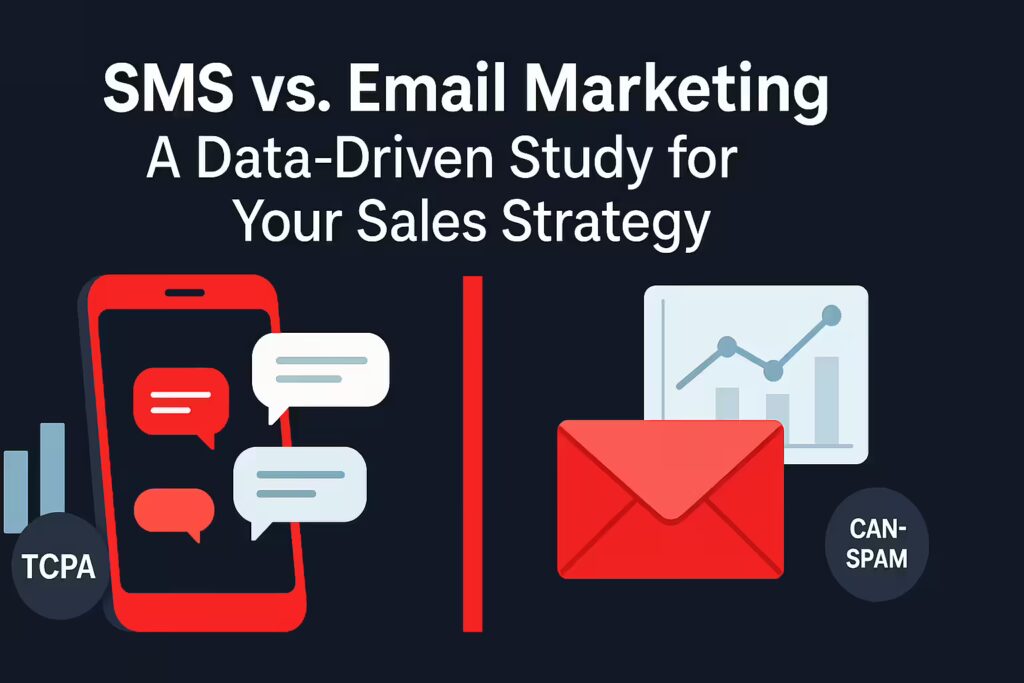Email vs SMS Marketing: Which Channel Drives More DTC Sales?

In the dynamic world of Shopify DTC brands, the ongoing debate between email and SMS marketing is more pertinent than ever. Both channels are essential players in the e-commerce toolkit, each offering unique advantages for retention and revenue generation.
Email has long been the reliable workhorse, while SMS is the rising star with impressive engagement stats. So, founder to founder: where should your next investment lie? Let's dive into the latest data and insights from fellow operators.
Open Rates & Engagement: SMS Takes the Lead
You’ve probably heard the buzz: SMS open rates soar between 98–99%. This isn’t just marketing speak—industry standards back it up (Kixie). Compare that to email, where open rates typically hover around 20–30%, a figure muddied by recent privacy updates from Apple (Kixie). If immediate attention is your goal, SMS is your best bet.
Click-through rates tell a similar story. Average SMS CTR is 5.76%, with top brands hitting over 14% (Klaviyo). In contrast, email’s CTR lingers around 1.3%, peaking at 2–5% for standout campaigns (Kixie). That’s a stark 3–5x engagement difference. Plus, 90% of texts are read within three minutes (Kixie). For urgent actions like restocks or flash sales, SMS is your go-to.

However, don’t underestimate email’s power. When it comes to storytelling, product education, and rich content, email remains unmatched (Kixie). Savvy DTC operators leverage SMS for immediacy and email for depth.
Revenue & ROI: Scale vs. Efficiency
Here’s where the plot thickens. Email marketing still accounts for a larger slice of DTC revenue—typically 20–30%, sometimes more. One eyewear brand attributes 44% of its total revenue to email after fine-tuning their strategies (Klaviyo). The key? List size and scalability. Email audiences often reach into the hundreds of thousands; SMS lists are generally smaller.
Yet, SMS excels in high-intent scenarios. Frances Valentine saw a 32% YoY revenue rise and a 21.8x ROI by integrating SMS for cart abandonment and back-in-stock notifications (Klaviyo). A footwear brand achieved a 78x SMS ROI, with a quarter of text subscribers making three or more purchases.
The takeaway: email wins in total sales volume, SMS triumphs in efficiency per message. SMS doesn’t replace email but can enhance revenue, especially for time-sensitive or high-value interactions.
Human Connection: SMS with a Personal Touch
Why does SMS often outperform? It feels personal—when done right. Unfortunately, many brands have turned SMS into a channel for “cringeworthy, annoying, and desperate sales pitches,” as retention expert Eli Weiss notes (Eli Weiss). The smarter approach mixes automation with human interaction.
Consider LiveRecover, an SMS cart recovery platform that employs real agents rather than bots. When a cart is abandoned, LiveRecover’s team personally reaches out to the customer, addressing objections and closing sales in real-time. Brands using LiveRecover report higher recovery rates and better customer feedback compared to automated systems. The secret? Customers appreciate knowing they’re conversing with a real person, not a script, boosting trust and conversion. For operators, LiveRecover exemplifies how combining SMS automation with genuine human interaction can yield significant results—scalable revenue without the spammy vibe.

Consumer Preferences: Email for Info, SMS for Action
Despite the SMS buzz, 60% of consumers still prefer email for brand offers (Mailmodo). Even more telling, 76% enjoy marketing emails, with half buying from them monthly (Mailmodo; Mailmodo). Email remains a trusted channel for those who prefer leisurely browsing.

SMS, however, is more direct—and sometimes intrusive. 63–64% of Gen X and older consumers find SMS marketing intrusive (Morning Consult). Gen Z is more open (only 54% feel texts are intrusive), and millennials are the most receptive—51% have made purchases via SMS in the past month (Morning Consult).
The key takeaway: Know your audience. Older customers lean towards email, while younger demographics are more SMS-friendly. But regardless of age, consumers dislike irrelevant or excessive texts. According to Klaviyo and Recharge, 72% want to receive brand texts at least weekly, but more frequent messages lead to opt-outs (Klaviyo).
Cost & Compliance: Weighing the Operational Considerations
From a cost perspective, email offers great value. Beyond the ESP subscription, additional emails incur little cost. SMS, in contrast, ranges from $0.01–$0.05 per message in the U.S. (Klaviyo). While texting 50,000 subscribers can be pricey, even small conversion increases can result in a 20x to 70x ROI.
Compliance is crucial. SMS requires explicit opt-in and must include opt-out instructions like “Reply STOP to unsubscribe” (Klaviyo). Avoid buying lists or auto-enrolling customers to prevent legal issues and bad PR. Email is more forgiving, with many customers auto-added post-purchase and an easy unsubscribe option.
The Smart Move: Orchestrate, Don’t Compete
So, who takes the crown: SMS or email? The data suggests—both. Email is your revenue backbone, ideal for nurturing relationships and storytelling. SMS serves as your high-conversion “strike team”, perfect for prompt nudges, abandoned carts, or urgent promotions.
Top DTC operators integrate both channels: teasing collections via email, sending a “last chance” SMS to non-openers, and perhaps adding a push notification. Use SMS strategically—especially with tools like LiveRecover, which blend automation with a human touch for pivotal conversion moments.
In conclusion: Don’t frame it as email vs. SMS. Craft a strategy that leverages each channel’s strengths, respects consumer preferences, and incorporates human interaction where it makes the most impact. Your brand—and your bottom line—will thank you.







